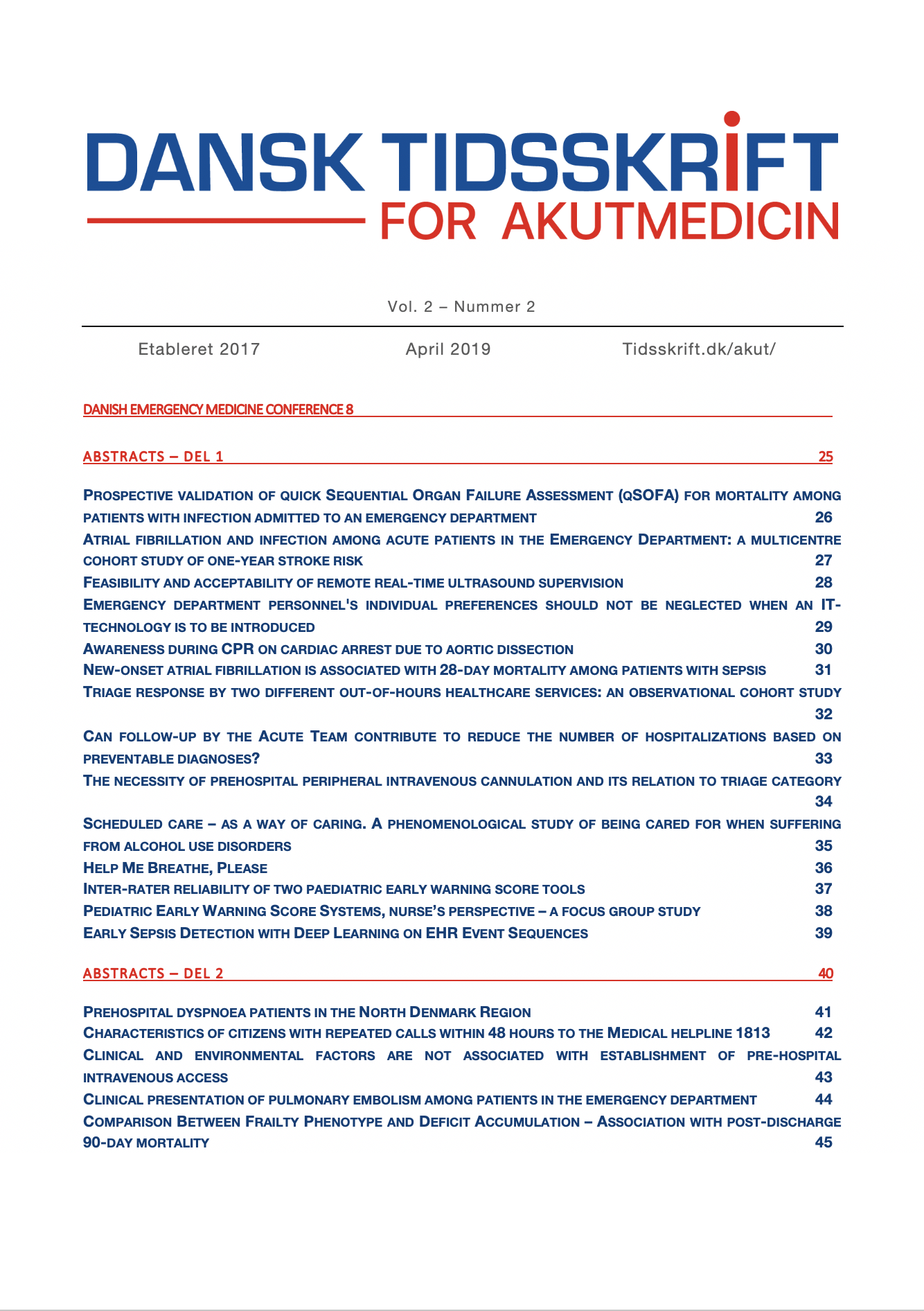Abstract
Background: The North Denmark Region implemented an electronic Prehospital Patient medical Record (PPR) in 2006. In 2015 a new version of the PPR was implemented. Implementation of new technologies can be challenging, including structurally and organizational obstacles, which causes difficulty in achieving data completeness. The aim was to examine completeness of registrations of vital parameters in PPR before and after the new version, and examine the distribution of the registrations.
Method: The cohort includes all patients to whom an ambulance was dispatched after an emergency 112-call in the North Denmark Region from 2007-2014 and 2016. We examined the registration and distribution of six vital parameters, and included the first measurement. A trend analysis was used to assess the change in registration from 2007-2014, 2016. To exclude outliers in registrations we defined cut-points for systolic blood pressure (BP) (250mmHG), heart rate (HR) (250 beats per minute), and Respiratory Rate (RR) (100 breaths per minute), based on clinical relevance and their natural distributions. The other vital parameters had well-defined cut-points. We examined the distributions with and without outliers.
Results: We identified 220,173 patients. Percentage of registrations without outliers from 2007 to 2014 vs. 2016: BP 73% to 86% vs. 81%, HR 76% to 88% vs. 81%, blood oxygenation (SpO2) 72% to 85% vs. 81%, RR 34% to 82% vs. 77%, Glasgow-Coma-Scale-score (GCS) 54% to 92% vs. 81%, Numeric Rating Scale for pain (NRS) 0% to 16% vs. 24%. Data from all years showed normal distributions for systolic BP and HR with mean (95% confidence interval): 141.8 (141.7; 142), 91.9 (91.8; 92.1), respectively. For RR, SpO2 and NRS; median (interquartile range) was: 18 (16; 20), 98 (95; 99), 6 (3; 8). From 2007-2014, 82% of the GCS-scores were on 15; in 2016 85% were on 15. There was 51% of the patients who had five vital parameters measured from 2007-2014 and 47% in 2016.
Conclusion: Registration increased significantly from 2007 to 2014, with a significant decrease in 2016, except for the NRS-score. The decrease in 2016 is probably attributed the implementation process. Overall vital parameters were within normal ranges, despite outliers in registration.
Licensed under a Creative Commons Attribution 4.0 International License (CC BY 4.0).
© The Author(s).


